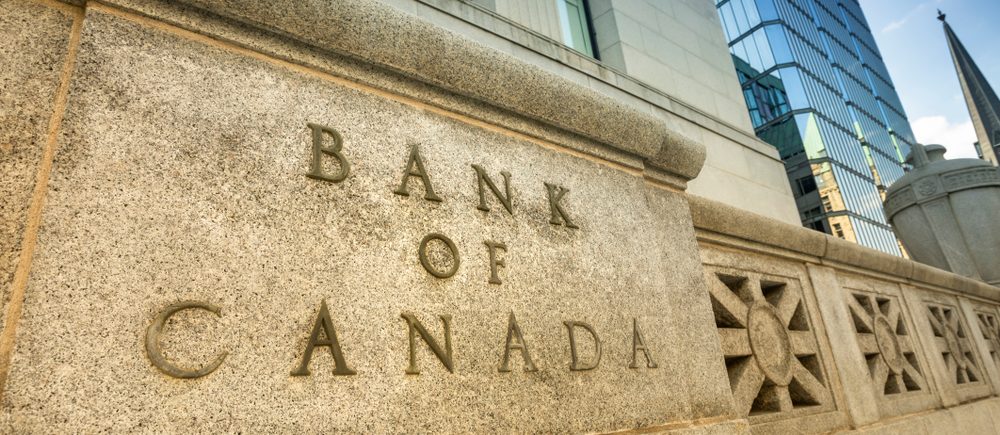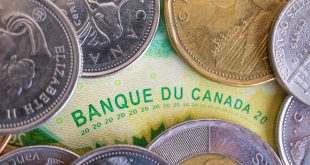The Canadian dollar’s recent retreat from a five-month high against the U.S. dollar signals a market on edge, with all eyes on the Bank of Canada’s upcoming interest rate decision. After a 0.1% dip to 1.3875 per U.S. dollar, driven partly by a 0.6% drop in oil prices to $61.15 a barrel, the loonie reflects broader economic unease. The central bank faces a pivotal moment: cut rates to cushion a slowing economy or hold steady to tame inflation creeping above its 2% target. This decision, set against U.S. tariff volatility and domestic pressures, demands a bold stance—pause now, but prepare to act decisively later.
Economic Crosswinds: Inflation vs. Growth
Canada’s economy is caught in a stagflation trap. Inflation hit 2.6% in February, fueled partly by the end of a GST and HST tax holiday, and March data, due Tuesday, is expected to hold steady or tick higher. Meanwhile, economic growth forecasts have been slashed to 1.2% for 2025 and 1.1% for 2026, reflecting fears of a U.S.-led trade war. Recent GDP figures show resilience, but sagging job numbers and crumbling consumer confidence paint a gloomier picture. The Bank of Canada, led by Governor Tiff Macklem, must weigh these opposing forces: inflationary pressures from tariffs and supply chain disruptions versus a slowing economy that could justify lower rates.
Macklem’s recent remarks underscore the challenge. He noted that U.S. tariff policies create “extreme uncertainty,” making traditional forecasting unreliable. The bank’s focus, he suggested, is on minimizing risks rather than projecting a clear path. This cautious approach hints at a likely pause at 2.75% on Wednesday, with markets pricing in a 55% chance of no change. Yet, the door remains open for future cuts, with economists projecting rates could fall to 2.25% by Q3 2025.
Tariff Turbulence: A Global Shock
U.S. tariff policies have whipsawed markets. In March, Canada faced steep tariffs on automobiles, steel, and aluminum, only to secure partial exemptions under the USMCA. A broader 90-day tariff pause for other countries, announced after a global market sell-off, offers temporary relief but no lasting clarity. These disruptions threaten Canada’s export-driven economy, where oil and manufacturing play outsized roles.
The Canadian dollar’s recent strength—rising above 72 U.S. cents—helps offset some inflationary pressures by lowering import costs, but it’s a fragile buffer against ongoing trade risks.
The tariff saga underscores a harsh reality: trade wars breed stagflation. Higher tariffs inflate consumer prices as businesses pass on costs, yet they also choke growth by curbing exports and investment. For Canada, the stakes are high. A prolonged trade conflict could deepen economic slowdown, while premature rate cuts risk entrenching inflation. The Bank of Canada’s decision to pause would signal a prudent wait-and-see strategy, preserving firepower for when tariff impacts crystallize.
Looking Ahead: Agility Over Haste
The Bank of Canada’s next steps hinge on adaptability. Wednesday’s decision, paired with the quarterly Monetary Policy Report, will likely avoid firm forecasts, reflecting Macklem’s wariness of unreliable projections. Instead, the bank should prioritize flexibility, ready to cut rates if growth falters further or hold firm if inflation persists. Two additional rate cuts by mid-2025 seem plausible, potentially bringing the benchmark to 2.25%, but only if trade tensions ease and inflation cools.
Canada’s economic path is fraught with uncertainty, but a pause now buys time to assess the fallout from global trade shifts. The central bank must stay nimble, balancing inflation control with growth support. As markets brace for Tuesday’s inflation data and Wednesday’s verdict, one thing is clear: bold, responsive policymaking will define Canada’s resilience in this turbulent era.

 Noor Trends News, Technical Analysis, Educational Tools and Recommendations
Noor Trends News, Technical Analysis, Educational Tools and Recommendations




